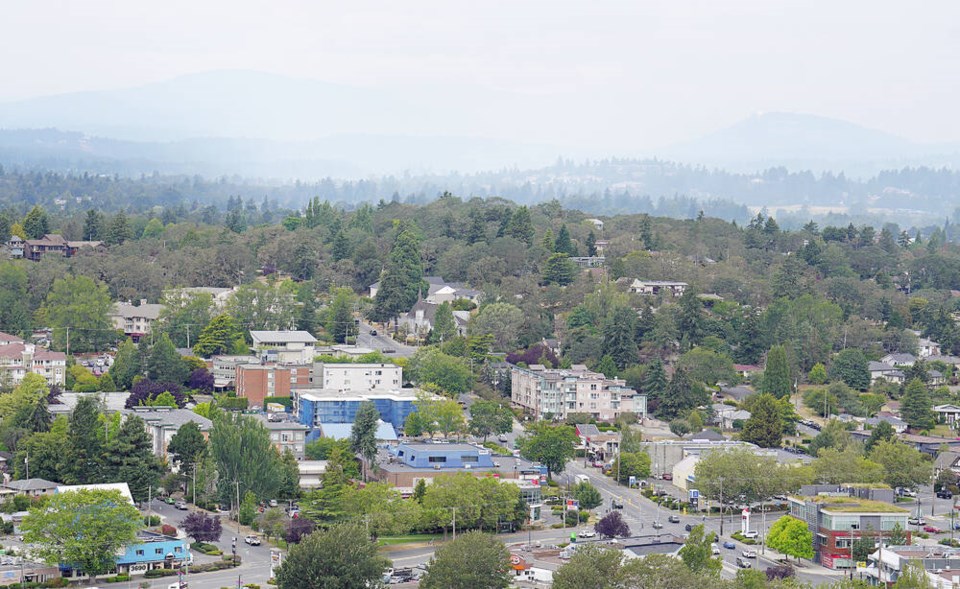Last week, I noted that the UN Environment Programme, in its Navigating New Horizons report, had made the case that “Cities and communities have an essential role in achieving sustainability transitions.
They are often places of learning, innovation and creativity, enabling the potential for systemic change at the local level.”
The report goes on to note: “Strong cities and local communities that are supported by robust local leadership and governance are the bedrock of environmental resilience in a complex world.”
What that might mean locally?
A good place to begin is with the need for robust local leadership and governance at the regional level.
Back in March 2017, I wrote a column titled “Thirteen municipalities, but only one planet” — the title says it all.
While I would not argue for one large regional government, having 13 separate municipal governments for a region of 400,000 people seems excessive.
Of course, the suggestion of amalgamating Victoria and Saanich, the two largest municipalities with half the regional population, while leaving all the others alone, makes no sense whatsoever.
Moreover, when a single municipality can disrupt a policy for its own parochial reasons, we lack robust government at the regional level.
The most egregious example was when Langford, under its previous regime, set the municipal boundary as the urban containment boundary, thus negating the very idea of urban containment and encouraging urban sprawl.
Multiple police and fire departments and the lack of a regional transportation authority are other examples of a less-than-robust regional government.
In the area of transportation, the CRD notes: “The current role of the CRD is limited to planning and policy support,” although the CRD is considering changes to governance that include a possible transportation authority.
So the first step toward a new social contract might be to consider whether the present system of governance in this region is fit for purpose in the 21st century.
Governance, of course, is more than just government, so any such process should look at a broad-based approach that brings together the public, private, labour, non-profit, academic and faith leadership in some form of regional leadership council.
It seems to me the Victoria Foundation, in partnership with the CRD and others, would be the natural convenor of such a council, as they already bring all these sectors together.
Such a council, which would also need to represent the diversity of the region’s population, could lead the process to engage widely with the community to craft a vision of the region as a place where all people thrive and reach their maximum potential within the ecological boundaries of the planet.
Part of that process should be a consideration of what reforms of municipal government and governance — both in structure and in process — are needed to operate effectively in the 21st century and to pursue that vision.
Some direction on the changes needed in the process of governance may be found in a 2020 report from Nesta, the U.K.’s independent innovation agency, on new operating models for local government.
The project brought together “practitioners and partners from twenty pioneering local authorities” that were working “upstream of service delivery, focusing on creating the economic, social and community conditions that enable citizens to thrive.”
Faced with “a decade of austerity-driven budget cuts from central government,” they had to innovate and adapt.
The report notes the common features of these new ways of working, the first of which is a “renewed sense of purpose orientated around thriving communities and places.”
This is coupled with a focus on moving upstream, dealing with problems before they become crises and recognizing the complexity and inter-connectedness of issues; a collaborative approach that is systemic and long-term and that sees local government as a platform for the action of citizens and partners; and a willingness to experiment and adapt.
This latter point requires utilizing an asset-based community development (ABCD) approach in building relationships with the community and key partners, recognizing and working to harness the knowledge, skills, experience and capacities of all segments of the community.
Indeed, “Many councils have worked to develop a new, informal ‘contract’ with citizens, reframing their mutual responsibilities,” a local expression of the new social contract the UNEP report proposes.
Dr. Trevor Hancock is a retired professor and senior scholar at the University of Victoria’s School of Public Health and Social Policy
>>> To comment on this article, write a letter to the editor: [email protected]



